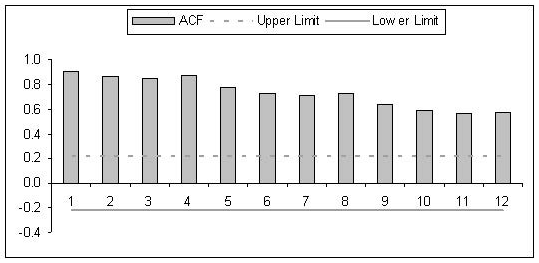ECO 6214 : Module 3, Midterm Exam ...
Module 3, Midterm Exam
Attempt 1 Score for this quiz: 90 out of 120
Submitted Apr 6 at 7:16pm
This attempt took 32 minutes.
Question 1 10 / 10 pts
Under what circumstances may it make sense NOT to prepare a business forecast?
- No data is readily available.
- There is no consensus among informed individuals.
- The industry to forecast is undergoing dramatic change.
- The future will be no different from the past.
- The forecast horizon is 40 years.
Question 2 5 / 5 pts
Which subjective forecasting method depends upon the anonymous opinion of a panel of individuals to generate sales forecasts?
- None of the above.
- Sales Force Composites.
- Jury of Executive Opinion.
- Customer Surveys.
- Delphi Method.
Question 3 5 / 5 pts
Which of the following is NOT considered a subjective forecasting method?
- Consumer surveys.
- Juries of executive opinion.
- Sales force composites.
- Naive methods.
- Delphi methods.
Question 4 5 / 5 pts
Suppose you are attempting to forecast a variable that is independent over time such as stock rates of return. A potential candidate-forecasting model is
- The Delphi Method.
- None of the above.
- The Jury of Executive Opinion.
- Last period’s actual rate of return.
- Last period’s actual rate of return plus some proportion of the most recently observed rate of change in the series.
Question 5 5 / 5 pts
Of the following model selection criteria, which is often the MOST important in determining the appropriate forecast method?
- Technical background of the forecast user.
- When is the forecast needed?
- What is the forecast horizon?
- Patterns the data have exhibited in the past.
- How much money is in the forecast budget?
Question 6 5 / 5 pts
Which time-series component is said to fluctuate around the long-term trend and is fairly irregular in appearance?
- Cyclical.
- Irregular.
- None of the above.
- Seasonal.
- Trend.
Question 7 10 / 10 pts
For which data frequency is seasonality not a problem?
- Annual.
- Daily.
- Monthly.
- Weekly.
- Quarterly.
Question 8 5 / 5 pts
When a time series contains no trend, it is said to be
- nonseasonal.
- seasonal.
- nonstationary.
- stationary.
- filtered.
Question 9 10 / 10 pts
A large sample of X-Y data values are analyzed and reveal a correlation coefficient of-.88. Which statement is correct?
- The correlation is weak because r is less than -1.
- There is no relation.
- A weak negative relationship exists.
- A fairly strong negative linear relationship exists. *
- If r had been +.88, the correlation would have been much stronger.
Question 10 10 / 10 pts
Which method uses an arithmetic mean to forecast the next period?
- Exponential smoothing.
- Adaptive filtering.
- Moving averages.
- None of the above
- Naive.
Question 11 10 / 10 pts
|
Time Period
|
Actual Series
|
Forecast Series
|
Forecast Error
|
|
1
|
100
|
100
|
0
|
|
2
|
110
|
--
|
--
|
|
3
|
115
|
--
|
--
|
If a three-month moving-average model is used, what is the forecast for period 4?
- 107.1.
- 108.3.
- 110.2.
- 106.6.
- 104.4.
Question 12 10 / 10 pts
|
Time Period
|
Actual Series
|
Forecast Series
|
Forecast Error
|
|
1
|
100
|
100
|
0
|
|
2
|
110
|
--
|
--
|
|
3
|
115
|
--
|
--
|
If a smoothing constant of .3 is used, what is the exponentially smoothed forecast for period 3?
- 103.0.
- 106.6.
- 115.0.
- 104.4.
- 112.6.
Question 13 10 / 10 pts

The ACF for The Gap sales is shown above. There is clear evidence in the ACF that
- Gap sales have fallen in the last 12 periods.
- there is a strong trend in the data.
- the data is too strongly correlated to identify trend.
- the data is stationary.
- there is no seasonality in the data.
Question 14 10 / 10 pts
If the correlation between body weight and annual income were high and positive, we could conclude that
- high incomes cause people to gain weight.
- high income people tend to be heavier than low income people, on average.
- low incomes cause people to eat less food.
- high incomes cause people to eat more food.
- high income people tend to spend a greater proportion of their income on food than low income people, on average.
Question 15 10 / 10 pts
In the Holt's two-parameter smoothing model, the trend smoothing parameter Gamma
- should be close to one when α is one.
- should be close to one when the data has a relatively smooth trend.
- should be close to one when α is close to one.
- should be close to zero when the data has a relatively smooth trend.
